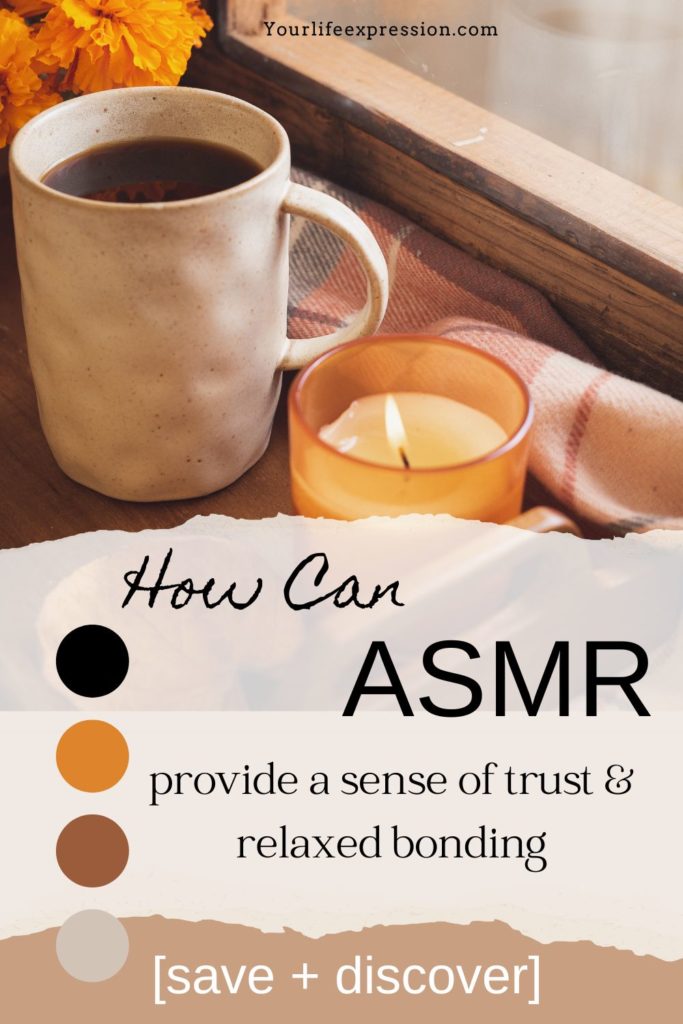Could watching someone folding paper or playing with Lego into a microphone help you feel good?
Well, I must admit that when I first came across ASMR I didn’t get it at all.
Why are those people doing all the weird things on video, intentionally making strange sounds and engaging in bizarre activities?
But soon I realise that ASMR is one of things that unless you experience it you won’t understand it.
ASMR Triggers
Followed by the sound of popcorn, Atlas appearing on my screen, whispering at the cinema bar, “Do you need a moment?…There is a buzz to certain sounds. That sort of comfy, familiar, visceral sensation…” Within a few seconds, I seem to be able to switch to a flow-like state without trying.
“For me, it feels very similar to the deep relaxing feeling of getting a massage. My brain feels immediately fuzzy, my muscles become fully relaxed, and my body almost feels like it is gently humming in a deeply soothing way. I want to put my head down and enjoy the moment with my eyes closed. Listening to ASMR triggers often helps me to fall asleep.”
Dr. Craig Richard describes ASMR
ASMR (Autonomous Sensory Meridian Response) was coined by Jennifer Allen in 2010, describing the tingling, relaxing sensation that some individuals experience in response to specific triggers.
It is suggested that the power of sensory triggers can induce relaxation and therapeutic benefits. In this study led by Dr Giulia Poerio, researchers investigated whether ASMR is a reliable and physiologically-rooted experience. The study found that those who experience ASMR showed significant increases in positive emotions and feelings of social connection while watching ASMR videos.
Although people have their own particular tastes, there are some common tingling triggers, such as:
quite tapping,
whispering,
calming movements,
gentle nature scenes,
delicate hand movements,
watching a friend painting,
or even…watching a geometry class.
These tingles typically originate in the head and may cascade down to other parts of the body, amplifying the soothing experience. In addition to the tingles, ASMR elicits a range of emotions and feelings, including a profound sense of relaxation, comfort, tranquillity, sleepiness, serenity, happiness, and even moments of euphoria.
“During childhood, we often encounter gentle sounds and sensory stimuli that create a sense of safety and relaxation.“
These emotional responses contribute to the overall pleasurable and blissful nature of the ASMR experience.
Link With Childhood

ASMR experience typically emerges in childhood – our very first social connections and emotional bonding. For instance, the tingling sensation you experienced at the back of your head from watching a ASMR video? It may remind you of the times your hair was brushed as a child.
During childhood, we often encounter gentle sounds and sensory stimuli that create a sense of safety and relaxation. For example, being read a bedtime story by loved ones with a soft, soothing voice, or hearing the sound of rain tapping on the window can create a calming effect. These experiences become ingrained in our memory as comforting and pleasant sensations.
ASMR triggers, especially whispered voices, can mimic the feeling of being comforted or cared for by our caregivers. The gentle sounds, close-up perspectives and personal attention in ASMR videos can evoke a sense of being nurtured and protected, similar to the way we might have felt during childhood, resembling paternal and maternal affections.
ASMR’s ability to tap into childhood memories and evoke a sense of nostalgia adds an extra layer of comfort, perhaps that’s what contributed to the widespread appeal and growing popularity of this unique sensory phenomenon.
Having said all of that, ASMR is a personal experience, not everyone will have the same nostalgic response to ASMR triggers, and ASMR experience can go beyond childhood memories.
Given our primate nature, no matter how much our society evolves, deep down, we all crave for a bit of emotional intimacy. We desire to feel safe and accepted.
Unintentional visual ASMR: during one of the lockdowns, putting this piece together helped me foster a connection with my home country especially when millions of us were not allowed to visit our family.
ASMR taps into the longing of trust and closeness which are often increasingly absent in modern living.
In the early stages of human evolution, trust and security within social hierarchies were crucial for survival. Being able to establish reliable relationships and alliances within our social groups ensured protection, access to resources, and overall better chances of coping with everyday struggles.
This deep-rooted need for connection and trust has stayed with us throughout our evolutionary journey, even as our societies have become more complex and interconnected.
ASMR, with its ability to create a pleasant calm sensation, taps into our primal longing for intimate and trustworthy relationships. It provides a momentary escape, offering a brief respite where we can experience a sense of relaxed bonding.
In the weird and wonderful world of ASMR, there is so much more research to be done. The professionals around the world are always looking for user input. For example, if you are curious, you can participate in this survey and report your experience to Dr. Craig Richard.
Featured image by Yoann Boyer@ Unsplash

